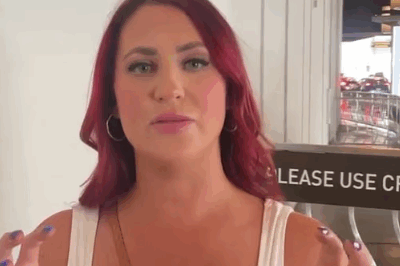As floodwaters swallowed neighborhoods across Texas in one of the worst disasters the state has seen in years, White House Press Secretary Karoline Leavitt arrived on the ground, sleeves rolled up, distributing aid and offering comfort. From handing out water and blankets to walking through waist-deep waters with rescue teams, her presence seemed like a symbol of federal solidarity.
But instead of gratitude, Leavitt found herself in the eye of a different storm — one rooted in the past, and aimed squarely at the Trump administration’s decision to slash staffing and resources from the National Weather Service.
No Warning. No Time. And Now, No Silence.
During an impromptu press briefing near a devastated neighborhood, a reporter bluntly asked:
“There was no warning before this hit. Does the administration acknowledge that Trump-era cuts to the National Weather Service played a role in this disaster?”
Clearly caught off guard, Leavitt replied:
“I’m here today for the people of Texas. To bring food, water, and hope. This is not the time to assign blame.”
But for many — especially those who lost homes or loved ones — the time for silence had passed.
Meteorologists were quick to point out that years of staffing cuts under the Trump administration had left crucial forecasting offices undermanned, particularly in rural and flood-prone areas. Some claimed outdated equipment and reduced monitoring capacity contributed to the lack of early warnings ahead of the storm.
Social Media Explodes: Help or Deflection?
Footage of Karoline carrying a child through flooded streets went viral — but so did the backlash.
“She brought cameras, not radar,” one user posted on X.
“This isn’t aid. This is cleanup — for bad decisions made years ago.”
The hashtag #WhereWasTheWarning began trending within hours, with citizens sharing stories of being blindsided by the floods and questioning why there had been no advance alert from authorities.
Is This Humanitarian Work — Or Political Theater?
Defenders of Leavitt argue that she’s doing what she can under impossible circumstances and should not be blamed for policies made before her tenure. But critics insist that goodwill photo ops cannot wash away the long-term consequences of scientific budget cuts.
“This wasn’t just a natural disaster,” said one former NOAA analyst.
“It was man-made neglect — years in the making.”
No Clear Answer, Just Rising Questions
Leavitt remains in Texas, coordinating relief efforts with FEMA and local authorities. But one question continues to haunt the administration:
Did the Trump-era weather service cuts contribute to the devastation — and if so, who will be held accountable?
As flood victims begin rebuilding, a new storm is gaining strength — one not of wind or rain, but of responsibility.
News
You Picked the Wrong Woman” — Karoline Leavitt Silences a Cocky Ex-NFL Star Live on Air, and the Internet Can’t Get Enough
The moment was electric — the kind of live TV where you just know something unforgettable is about to happen….
‘It was absolutely te:rrif:ying” – Southwest passenger describes h0rr0r of plummeting mid-air as screams filled the cabin when pilot avoided cr:ash
A Southwest passenger aboard a flight that was forced to make an evasive maneuver to avoid a mid-air collision said screams…
What’s Next for Late-Night? Expert Breaks Silence After Shocking Cancellation of The Late Show With Stephen Colbert
After the CBS network cancelled The Late Show With Stephen Colbert after three decades, one media expert has weighed in…
“I Know His True Face” – Ozzy Osbourne’s first wife decides to erase the rock star from her life as she reveals ha:unting secrets from their “HE:LLI:SH” past together
As the patriarch of reality TV show The Osbournes – presiding in potty-mouthed dysfunction over the family antics – he won a…
“I’LL NEVER FORGET THAT NIGHT” – Sharon Osbourne speaks through heartbreak as she recalls the moment Ozzy Osbourne brought another woman back to the h0tel — forgetting his own wife was already there
Ozzy Osbourne and his wife, Sharon Osbourne, once fondly recalled what happened when the Black Sabbath frontman picked up a…
Cameras Off, True Colors Revealed – What Stephen Mulhern Did Backstage at You Bet! Will Leave You Sh0cked
Another brand-new series of You Bet! is set to air on ITV with host Stephen Mulhern at the helm. And now, someone who managed…
End of content
No more pages to load












